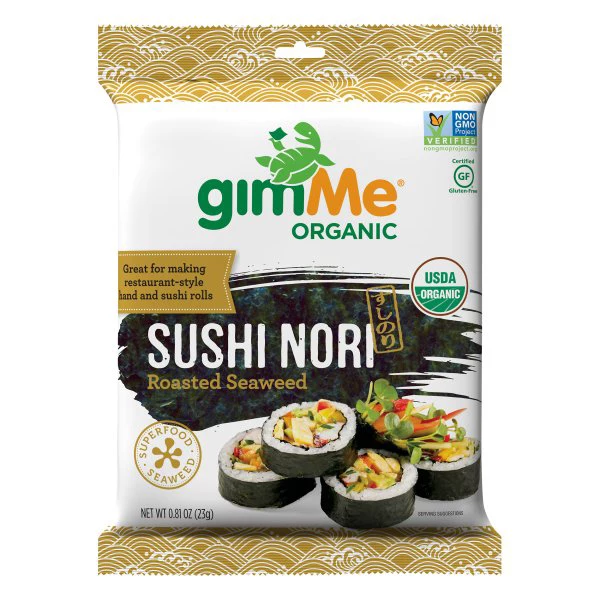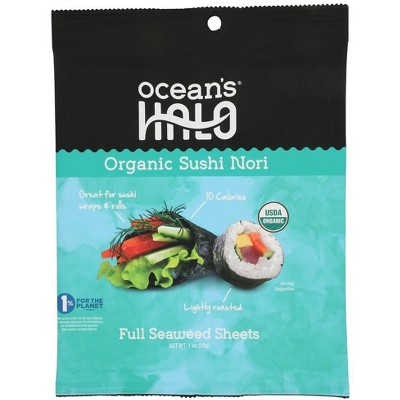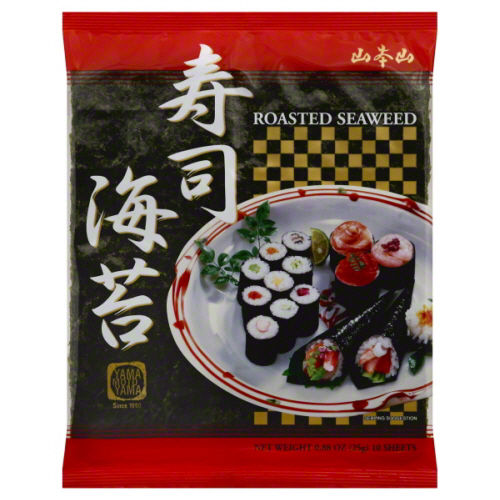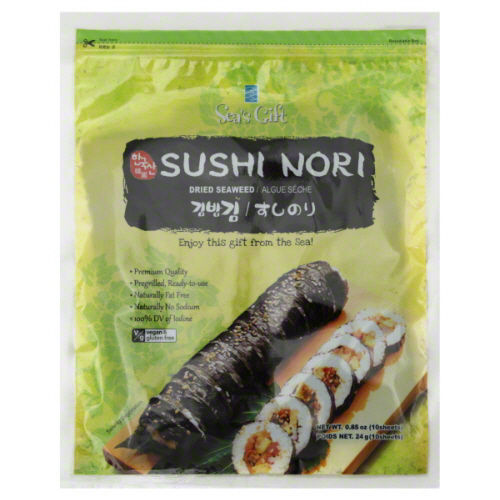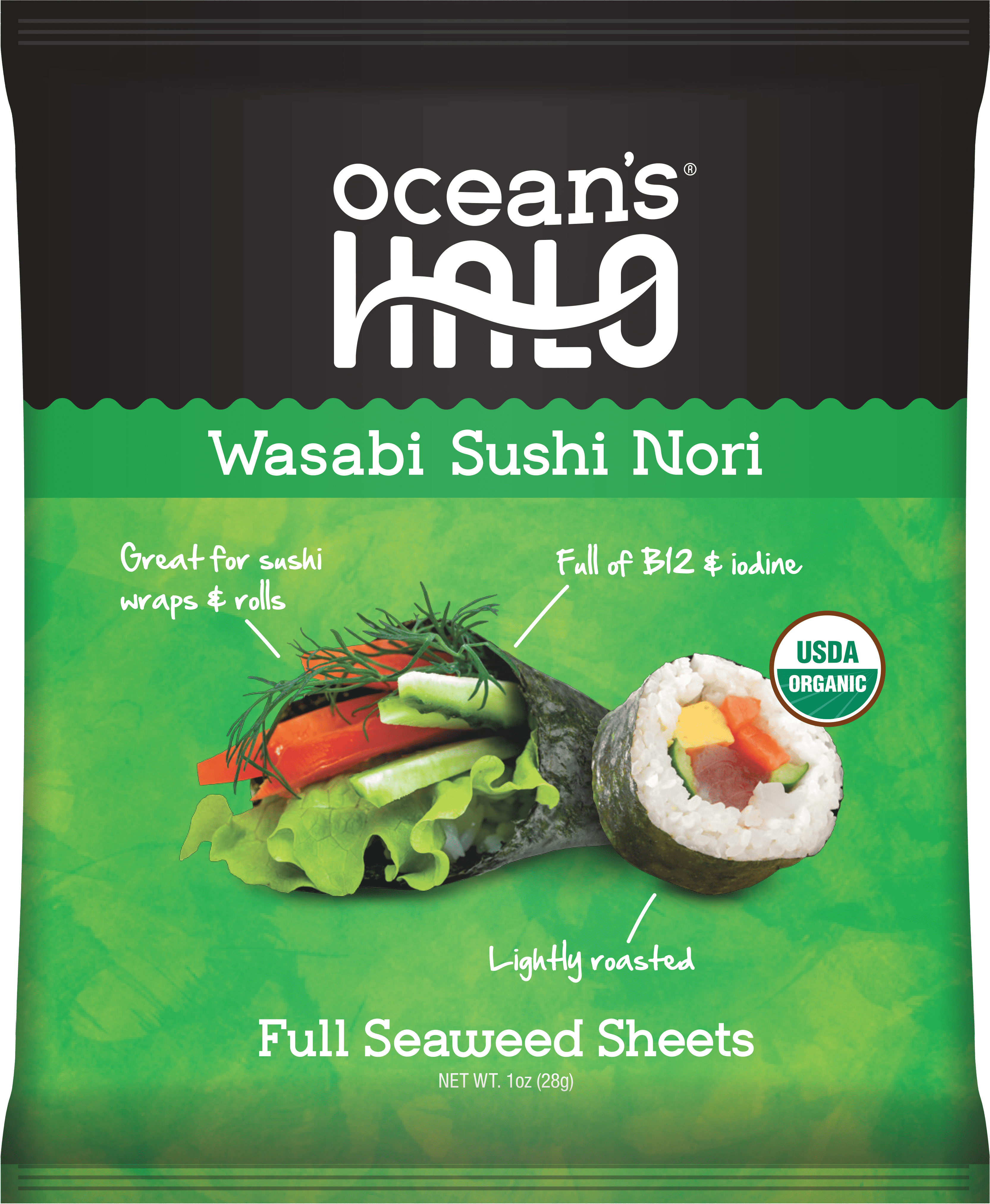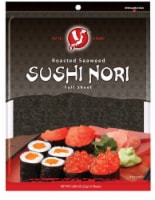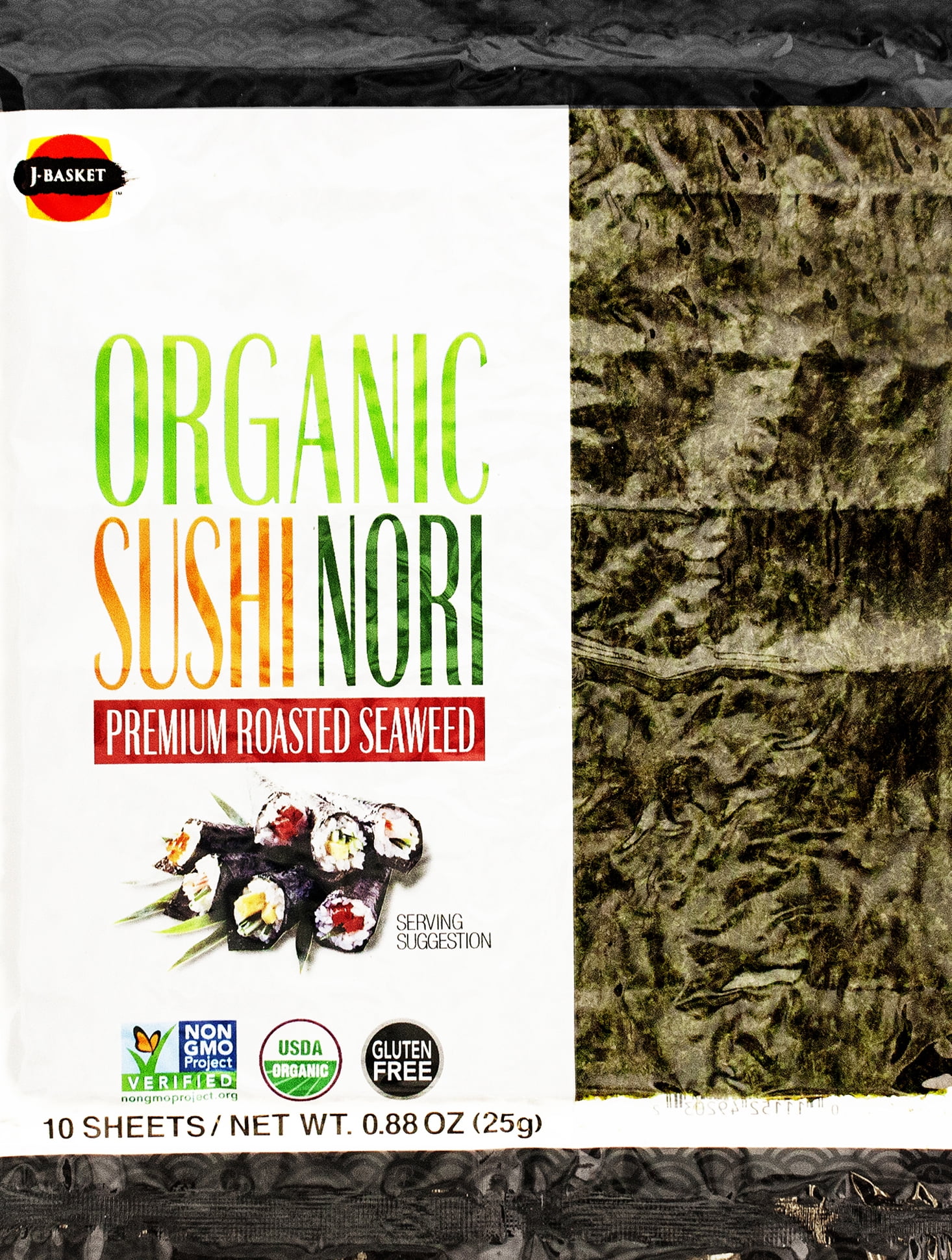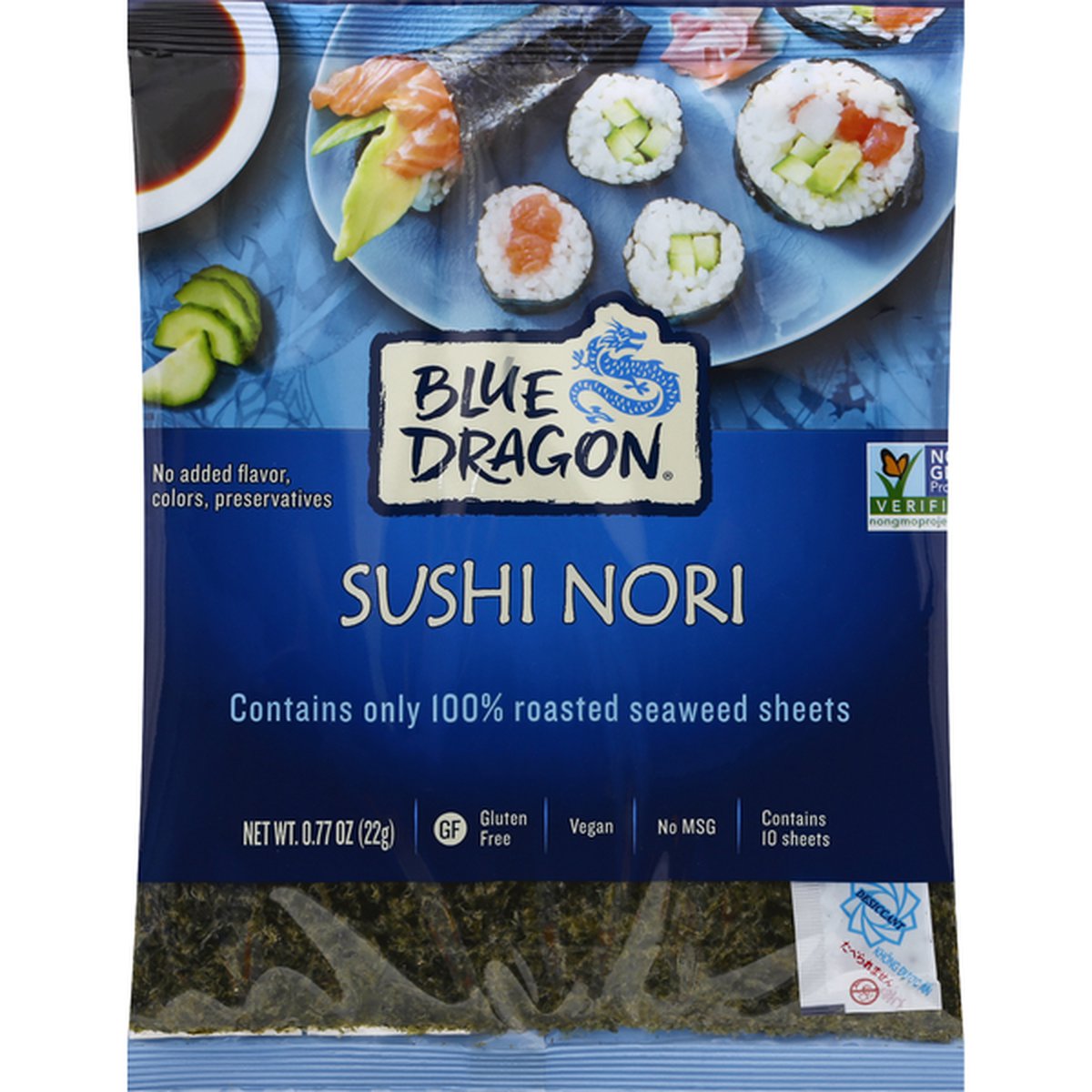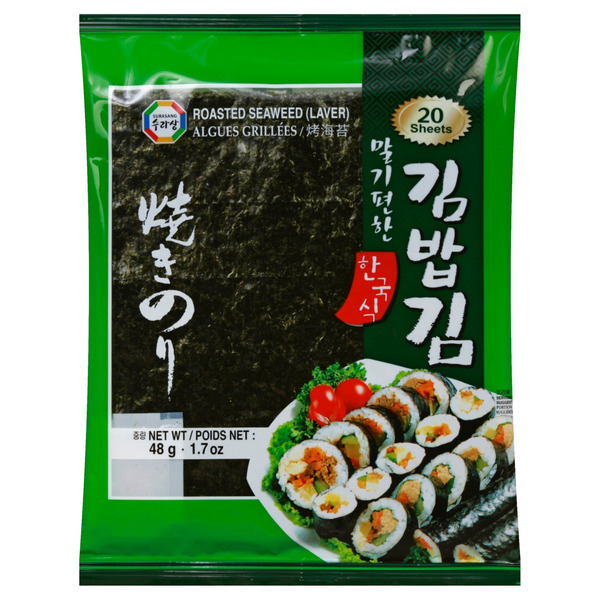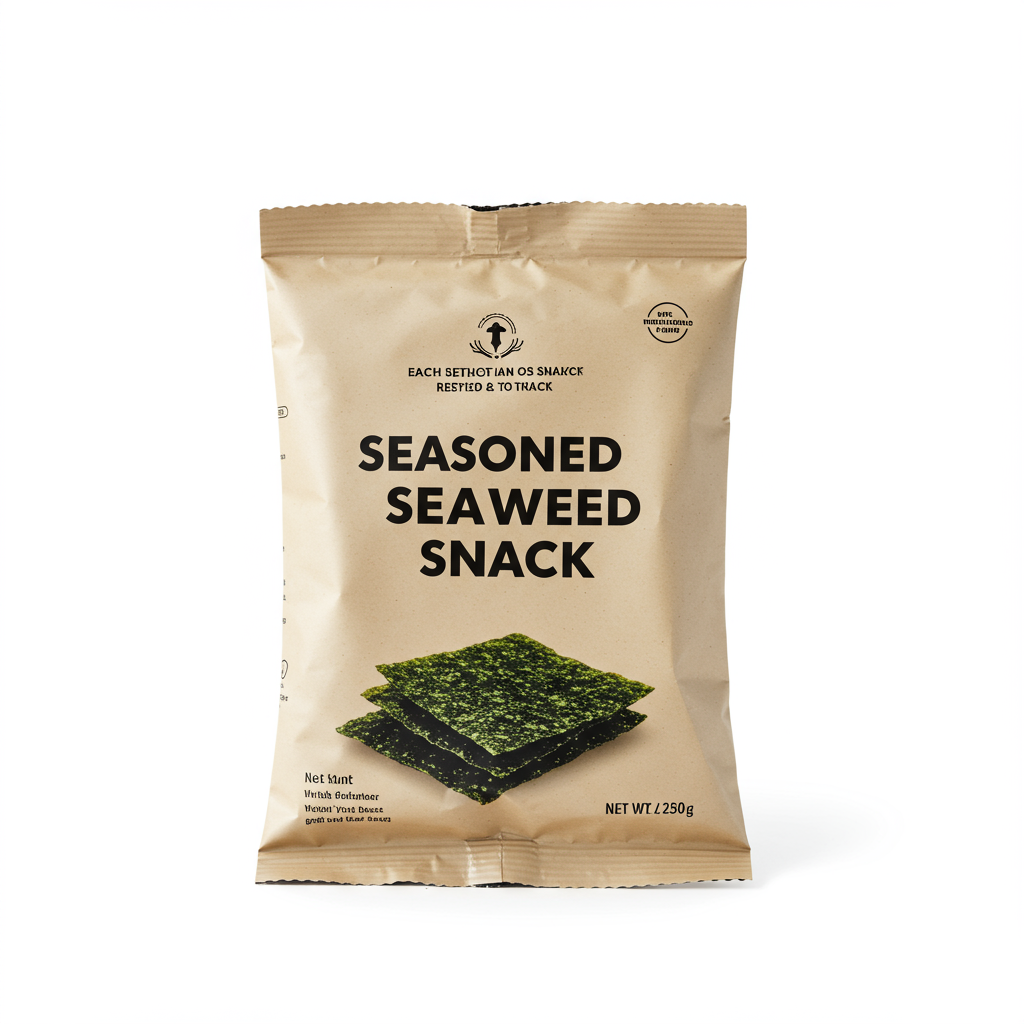MAIN DISHES
APPETIZERS
SNACKS
Nori Seaweed
Nori seaweed, scientifically known as Porphyra, is a type of edible red algae commonly used in various Asian cuisines, particularly in Japanese dishes like sushi and onigiri. It's typically cultivated and harvested along the ocean coastline and then processed into thin sheets, which are dried and roasted to create the final product. Nori is appreciated for its distinctive umami flavor and is rich in vitamins, minerals, and dietary fiber.
In the culinary world, nori's most popular use is as a wrap for sushi rolls, but it also complements a wide range of dishes including rice balls, soups, and salads. Additionally, it can be enjoyed as a standalone snack or crushed and sprinkled on top of other dishes to add a burst of umami flavor. For home cooks and consumers, nori seaweed provides a versatile and nutritious ingredient that can easily be incorporated into daily meals.
50%
CARBS
0%
FAT
50%
PROTEIN
412 Nori Seaweed Products
gimMe Organic Roasted Seaweed - Restaurant-style Sushi Nori Sheets - 0.81 Ounce
Ocean's Halo, Sushi Nori Seaweed, Organic, Vegan, Non-GMO, Perfect Paper for Wraps
Yama Moto Yama Seaweed, Roasted
Sea's Gift Sushi Nori
Ocean's Halo, Wasabi Sushi Nori Seaweed Sheets, Organic, Vegan, Shelf-Stable, Perfect Paper for Wraps, 10 per Pack
Yatta Sushi Nori Full Sheet Roasted Seaweed
GimMe® Organic Sushi Nori Roasted Seaweed
J-Basket, Sushi Nori Seaweed Full Sheet, USDA Organic, Vegan, Non-GMO, Gluten-Free, 10 full sheets per bag, Shelf-Stable
Blue Dragon Sushi Nori
Surasang Roasted Seaweed
Used In 37 Recipes
2
Refreshing Salmon Sushi Bowl
1
Deconstructed California Roll Bowl with Cauliflower Rice
2
Sweet & Spicy Bacon Kimchi Udon Noodle Bowl
3
Baked California Roll Casserole
1
Sweet & Spicy Bacon Kimchi Udon Stir-Fry
2
Savory Tofu Musubi
3
Umami Chickpea Avocado Rice Triangles
1
Yaki Onigiri with Flavorful Shiitake
Nori Seaweed Is Frequently Used With
Nori Seaweed FAQ
Cooking with nori seaweed offers a great opportunity to introduce a unique flavor and nutrient-packed ingredient into your meals. However, many people often encounter problems when working with nori. The most common mistake made by beginners is handling them wrong or using low-quality nori sheets, which when not fresh, might tear or crumble easily. When using nori for sushi, a good tip is to keep your hands slightly wet to prevent the nori from sticking but not too wet, as you don't want it to become soggy.
Another remarkable fact to note that nori isn’t only for sushi or wraps. You can use it to elevate the flavor of various dishes like salads, soups, and noodles, thereby efficiently bringing out its umami essence.
The unassuming black sheets of seaweed are not only a mainstay of Japanese cuisine, they're also a potent superfood. Nori is rich in a wide variety of beneficial nutrients, including iodine, vitamin C, vitamin B12 (a nutrient that's often hard to get in a vegan diet), and omega-3 fatty acids. Consider utilizing nori in your cooking, not just for its unique taste, but also for these health benefits.
How do you eat nori seaweed?
What does nori seaweed taste like?
How can I add more flavor to nori?
Can you eat nori seaweed raw?
Does nori seaweed need to be cooked?
Is nori seaweed good for you?
How many calories in nori seaweed?
What dishes go with nori seaweed?
Can I use nori for vegan dishes?
What is the difference between nori and other types of seaweed?
Expiration & Storage Tips
When does nori seaweed expire?
In its unopened original packaging, nori seaweed should stay fresh for about one to two years past the date printed on the label. However, once the packaging is opened, it's best to consume it within a few weeks to enjoy its peak flavor and crispiness. Although it doesn't strictly 'expire' and become unsafe to eat, the texture and flavor will diminish over time, especially if not stored correctly. For homemade sushi or other dishes using nori, try to consume within a day or so for the best taste. Nori can be frozen for up to a month without significant loss of quality.
How do you tell if nori seaweed is bad?
With nori seaweed, the first sign that it's past its prime is usually a change in texture. Fresh nori should be crisp and break apart easily, but as it ages, it may become bendy and rubbery. The color might also fade, and it could develop a distinctly stale, fishy smell. Another sure sign is the presence of mold, which could appear as fuzzy green or white patches on the surface. While nori doesn't typically spoil in a way that would make you sick, these changes mean it's time to toss out the old package and get a new one. Whenever in doubt, it's better to be safe and discard any questionable nori.
Tips for storing nori seaweed to extend shelf life
• Always store your nori in a cool, dark, and dry place. Keeping it in a tightly sealed container can help maintain its freshness, flavor, and crispiness longer.
• Once you've opened the package, try to use it up within a few weeks, even if you're storing it properly. The texture and flavor are at their best when the nori is fresh.
• If you don't think you'll finish it in time, you can also freeze the nori. Just wrap it tightly in plastic wrap or put it in a freezer-safe zip-top bag and put it in the freezer. When you're ready to use it, let it defrost at room temperature for a few minutes, and it should be good to go.
• If you live in a humid area and find your nori gets soggy quickly, try storing it with a packet of silica gel (the kind found in shoe boxes) to help keep it dry. Just make sure not to eat the packet!
EXPIRES WITHIN
5 - 7
MONTHS
Substitutes
Health Info
Macros
0g
CARBS
0g
FAT
0g
PROTEIN
Allowed on these diets
LOW FAT
HIGH CALCIUM
VEGETARIAN
KETO
PALEO
WHOLE 30
MEDITERRANEAN
LOW CARB
VEGAN
LACTOSE FREE
GLUTEN FREE

